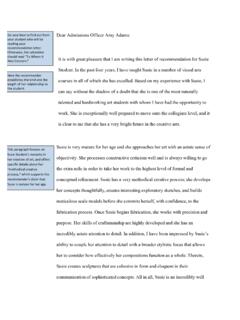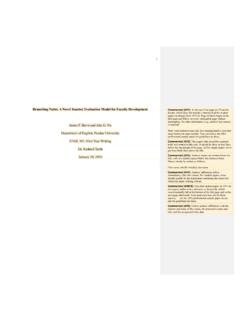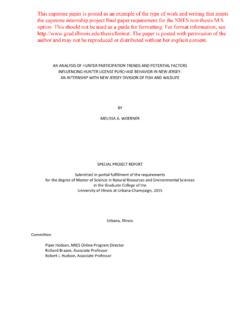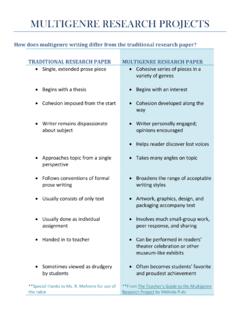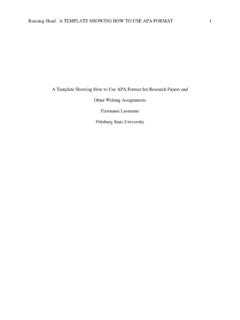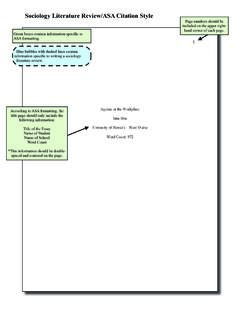Transcription of Angeli 1 Professor Patricia Sullivan English 624
1 The thesis statement is often (but not always) the last sentence of the introductio-n. The thesis is a clear position that you will support and develop throughout your paper. This sentence guides your paper. Angeli 1 E. L. AngeliProfessor Patricia Sullivan English 624 12 February 2012 Toward a Recovery of Nineteenth Century Farming Handbooks While researching texts written about nineteenth century farming, I found a few authors who published books about the literature of nineteenth century farming, particularly agricultural journals, newspapers, pamphlets, and brochures. These authors often placed the farming literature they were studying into an historical context by discussing the important events in agriculture of the year in which the literature was published (see Demaree, for example). However, while these authors discuss journals, newspapers, pamphlets, and brochures, I could not find much discussion about another important source of farming knowledge: farming handbooks.
2 My goal in this paper is to bring this source into the agricultural literature discussion by connecting three agricultural handbooks from the nineteenth century with nineteenth century agricultural history. To achieve this goal, I have organized my paper into four main sections, two of which have sub-sections. In the first section, I provide an account of three important events in nineteenth century agricultural history: population and technological changes, the distribution of scientific new knowledge, and farming s influence on education. In the second section, I discuss three nineteenth century farming handbooks in connection with the important events described in the first section. Special attention is paid to the role that these handbooks played in the dissemination of agricultural knowledge (and the creation of genuinely new knowledge).
3 I endIf your paper is long, you may want to write about how your paper is organized. This will help your readers follow your ideas. MLA requires double-spacing throughout a document. D o not single-space any part of the document. Page numbers begin on page 1 and end on the final page. Typeyour name next to the page number in the header so that it appears on every name, the Professor 's name, the course number, and the date of the paper are double- spaced in 12-point, Times New Roman font. Dates in MLA are written in this order: day, month, and year. Do not abbreviate the are centered and written in 12-point, Times New Roman font. The title is not bolded, underlined, or italicized. Blue boxes contain directions for writing and citing in MLA style. Green text boxes contain explanations of MLA style guidelines.
4 The introduc- tory paragraph, should setthe contextfor the restof the your readers why you are writing and why your topic is important. Use personal pronouns (I, we, us, etc.) at your instructor s discretion. Angeli 2 When using headings in MLA, title the main sections (Level 2 headers) in a different style font than the paper s title, , in small caps. The headings used here follow a three-level system to break the text into smaller sections. The different levels help organize the paper and maintain consistency in the paper s organization. You may use your own format for headings as long as they are consistent. with a third section that offers research questions that could be answered in future versions of this paper and conclude with a fourth section that discusses the importance of expanding this particular project.
5 I also include an appendix after the Works Cited that contains images of the three handbooks I examined. Before I can begin the examination of the three handbooks, however, I need to provide an historical context in which the books were written, and it is to this that I now turn. HISTORICAL CONTEXTThe nineteenth century saw many changes to daily American life with an increase in population, improved methods of transportation, developments in technology, and the rise i n the importance of science. These events impacted all aspects of nineteenth century American life (most significantly, those involved in slavery and the Civil War). However, one part of American life was affected that is quite often take n for granted: the life of the American farmer. Population and Technological Changes. One of the biggest changes, as seen in nineteenth century America s census reports, is the dramatic increase in population.
6 The 1820 census reported that over 10 milli on people were living in America; of those 10 million, over 2 million were engaged in agriculture. Ten years prior to that, the 1810 census reported over 7 milli on people were living in the states; there was no category for people engaged in agriculture. In this ten-year time span, then, agriculture experienced significant improvements and changes that enhanced its importance in American life. One of these improvements was the development of canals and steamboats, whic h allowed farmers to sell what has previously bee n unsalable [sic] and resulted in a If there is a gramma- tical, mechanical, or spelling error in the text you are citing, type the quote as it appears. Follow the error with [sic]. The paragraph after the Level 2 headers starts sure todifferen- tiate the Level 3 headers from the Level 2 headers.
7 The paragraph continues directly after the header. Headings,though not required by MLA style, can help the overall structure and organization of a paper. Use them at your instructor s discretion to help your reader follow your ideas. Angeli 3 substantial increase in [a farmer s] ability to earn income (Danhof 5). This improvement allowed the relations between the rural and urban populations to strengthen, resulting in an increase in trade. The urban population (defined as having over 2,500 inhabitants) in the northern states increased rapidly after This increase accompanied the decrease in rural populations, as farmers who preferred trade, transportation, or tinkering to the tasks of tending to crops and animals found great opportunities in the city (Danhof 7). Trade and transportation thus began to influence farming life significantly.
8 Before 1820, the rural community accounted for eighty percent of consumption of farmers goods (Hurt 127). With the improvements in transportation, twenty-five percent of farmers products were sold for commercial gain, and by 1825, farming became a business rather than a way of life (128). This business required farmers to specialize their production and caused most farmers to give less attention to the production of surplus commodities like wheat, tobacco, pork, or beef (128). The increase in specialization encouraged some farmers to turn to technology to increase their production and capitalize on commercial markets (172). The technology farmers used around 1820 was developed from three main sources: Europe, coastal Native American tribes in America, and domestic modifications made from the first two sources technologies.
9 Through time, technology improved, and while some farmers clung to their time-tested technologies, others were eager to find alternatives to these technologies. These farmers often turned to current developments in Great Britain and received word of their technological improvements through firsthand knowledge by talking with immigrants and travelers. Farmers also began planning and conducting experiments, and although they lacked a truly scientific approach, these farmers engaged In-text citations occur after the quote but before the period. The author s/ authors name/s go before the page number with no comma in between. Insert the footnote after the punctuatio--n markthatconcludesthesentence. Use endnotes to explain a point in your paper that would otherwise disrupt the flow of the you cite the same source multiple times in a row, you do not have to repeat the author's last name until you start a cite a different author or start a new 4 Titles of published works (books, journals, films, etc.)
10 Are now italicized instead of underlined. in experiments to obtain results and learn from the Agricultural organizations were then formed to encourage .. experimentation, hear reports, observe results, and exchange critical comments (Danhof 53). Thus, new knowledge was transmitted orally from farmer to farmer, immigrant to farmer, and traveler to farmer, which could result in the miscommunication of this new scientific knowledge. Therefore, developments were made for knowledge to be transmitted and recorded in a more permanent, credible way: by print. The Distribution of New Knowledge. Before 1820 and prior to the new knowledge farmers were creating, farmers who wanted print information about agriculture had their choice of agricultural almanacs and even local newspapers to receive information (Danhof 54).
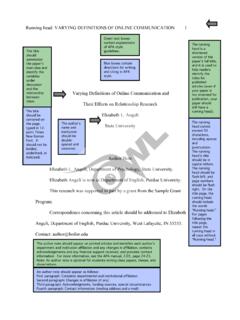

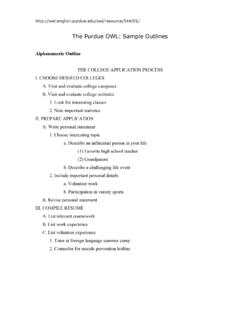
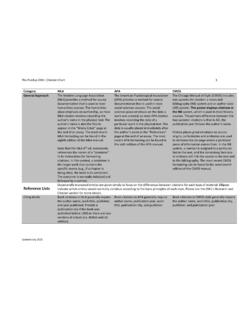
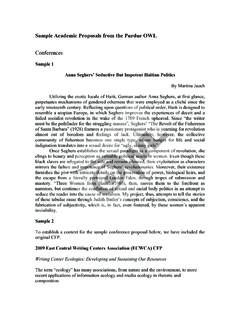
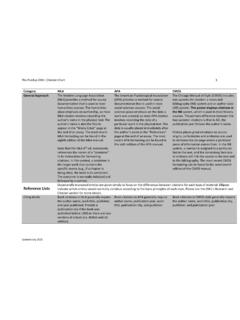
![A NOVEL TEACHER EVALUATION MODEL 1 Commented [AF1]](/cache/preview/e/4/4/2/1/3/c/f/thumb-e44213cf73a7f1d5edae6ca83d79c07d.jpg)
